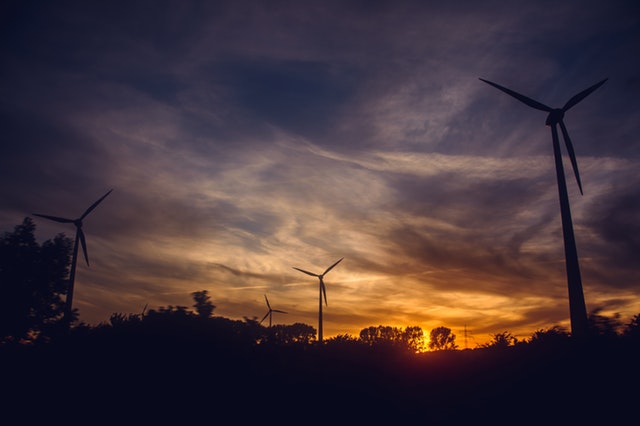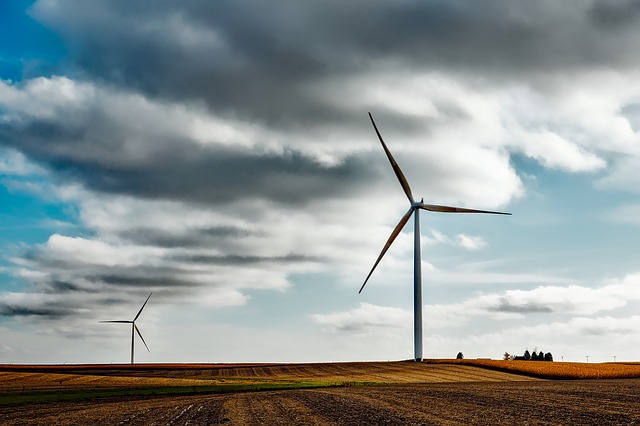Building Economic Value With Your Wind Turbine Pitch System
 A wind farm is like a dairy farm. Each cow has to receive individual attention and care to keep the operation at peak efficiency and productivity. Farmers monitor their cows for every little problem that might muck up the entire operation — just like your wind turbine pitch system should be doing. Failure to catch issues early and fix them can be economically devastating.
A wind farm is like a dairy farm. Each cow has to receive individual attention and care to keep the operation at peak efficiency and productivity. Farmers monitor their cows for every little problem that might muck up the entire operation — just like your wind turbine pitch system should be doing. Failure to catch issues early and fix them can be economically devastating.
The economics of wind farms seem pretty simple: To compete in the energy market, the turbines just have to deliver more kilowatt-hours at a lower price. What should matter is not how much electricity you’re selling, but the value of that electricity. There’s a point where you’re winning and a point where your consumption of service life is so bad that it’s barely worth running it.
Achieving that goal requires the proper amount of attention to each turbine — top-of-the-line pitch technologies deliver data needed for SCADA systems and processes to provide that focus.
What Does an Economic Wind Turbine Pitch Actuator Look Like?
Your wind turbines have a finite fatigue life. The rate at which fatigue life is consumed is governed by the power output and the nature of wind field energy and turbulence.
No matter what kind of power purchase agreement you have, this is where sophisticated wind turbine pitch actuators come into play. A top-end product offers important insights into what a wind system’s economic model ought to look like. It can help get the most out of a turbine by significantly extending its useful life. In other words, it’s a technological advancement well worth retrofitting into existing turbines (if possible) and installing in new ones.
How It Happens
An advanced pitch actuator system is an intelligent element of the overall pitch control system. It should operate on the supervisory control and data acquisition (SCADA) level in each turbine. It is, in essence, an edge computing device.
So what does that mean? Edge computing puts data collection and analysis out on the edge of a system instead of at the center. It’s the intelligent data processing connection where the real physical world is transformed into digital form. So each turbine becomes its own collection and analysis point. It’s as if every cow on the dairy farm were wired to collect and analyze data about itself in real time so problems could be detected and handled immediately.
An advanced pitch system can reduce fatigue life on all drive line components and the structure itself by smoothing the blade turbulence and dynamic wind field energy level that pass through the turbines.
Real-time data coming from the actuator can “feel” the fatigue your blades sustain. That data coming back to the SCADA can inform decision making regarding how hard you want to run the turbine at that moment. There may be weather conditions where it’s better to curtail the turbine’s hard work to get a more optimized economic value for the energy you’re producing.
Just as important, the best wind turbine pitch actuators provide condition-based historical monitoring. They collect and store historical data, such as:
- Lifetime average speed
- Lifetime average torque
- Highest torque experienced
Why Is Historical Data Important?
For an accurate economic model, historical data is critical. These data reveal which turbine components will need repair and maintenance and when that work will need to be done, making operations much more efficient.
The pitch actuator can:
- Predict when certain blades need to be inspected, repaired, or replaced
- Determine at what turbine output to run a system to extend turbine life
- Show how many hours a turbine has operated at a specific torque level
Historical condition monitoring allows predictions that help achieve stable economics by helping operators avoiding frequent and costly turbine shutdowns.
Component Selection & Maintenance
Components
Part of a smart economic forecasting strategy comes from selecting the appropriate rigidity of components for your operation. You could install, for example, a bearing into the pitch motor that would last for 100 years. Sure, it would be sturdy, but it it’s not ideal for your application, why bother.
There’s a line between consumption of replacement of parts and “overengineering” the turbine, including the pitch system. You could be adding cost to the system where it wouldn’t be best used.
Zero Planned Maintenance
Once everything’s up and running? You can rest easy for a bit longer than you think. Next gen-systems have totally done away with routine maintenance. Top wind energy operations have moved toward only replacing or checking up on parts when they’ve detected something’s worn out.
Just because your gear box reached 100,000 miles doesn’t mean it needs replaced. Feel free to run it until the day before it’s going to break — and trust in your pitch control system to help monitor the situation.
Simply put, eliminating unnecessary work reduces the economic impact of maintenance.
The Alternative to a Blade Pitch System-Based Economic Model
A high-end pitch actuator is a significant investment, but some can be found at a cost no higher than your run-of-the-mill actuators. Like other design changes, it can be evaluated in terms of costs and benefits. It’s an exercise well worth undertaking and depends on your goal.
Some owners just don’t care; they just want to get all the power, all the time. But for the more cost-conscious, not installing a sophisticated pitch actuator can be equivalent to throwing money in a blender. The risks include:
- Blade damage
- Drive train and tower damage
- Reduced turbine fatigue life
Catching problems early can mitigate all these issues and more.
So while you may think a sophisticated pitch actuator is a more expensive system, Windurance provides superior capabilities without any cost premium.
- Your tower doesn’t need to be as strong
- Your low-speed shaft for generators doesn’t need to be as strong
- It’s predictive abilities prevent violent, costly shutdowns
In reality, cutting-edge pitch actuators represent fatigue reduction at a bargain price! And everyone knows that early detection is key to a cure, whether the problem affects a dairy cow or a wind turbine.



